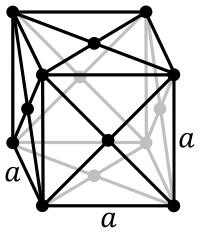
Photo from wikipedia
Abstract The purposes of research were following: observation and interpretation of variations of radon concentration in the atmosphere - vertical, seasonal, spatial and analysis of relation between average annual radon… Click to show full abstract
Abstract The purposes of research were following: observation and interpretation of variations of radon concentration in the atmosphere - vertical, seasonal, spatial and analysis of relation between average annual radon concentration and ground natural radiation and gamma dose rate. Moreover we wanted to check the occurrence of radon density currents and the possibility of radon accumulation at the foot of the spoil tip. The surveys were carried out in Okrzeszyn (SW Poland) in the area of the spoil tip formed during uranium mining that took place in 60's of 20th century. The measurements were carried out in 20 measurements points at three heights: 0.2 m, 1 m and 2 m a.g.l. using SSNTD LR-115. The survey lasted one year and detectors were exchanged at the beginning of every season. Uranium eU (ppm), thorium eTh (ppm) and potassium K (%) contents were measured using gamma ray spectrometer Exploranium RS-230, ambient gamma dose rate using radiometer RK-100. The average radon concentration on this area was 52.8 Bq m-3. The highest radon concentrations were noted during autumn and the lowest during winter. We observed vertical variations of radon concentration. Radon concentrations decreased with increase of height above ground level. The decrease of radon with increase of height a.g.l. had logarithmic character. Spatial variations of radon concentrations did not indicate the occurrence of radon density currents and accumulation of radon at the foot of the spoil tip. The analysis of relation between average radon concentrations and ground natural radiation (uranium and thorium content) or gamma dose rate revealed positive relation between those parameters. On the base of results mentioned above we suggested that gamma spectrometry measurements or even cheaper and simpler ambient gamma dose rate measurements can be a useful tool in determining radon prone areas. This should be confirmed by additional research.
Journal Title: Atmospheric Environment
Year Published: 2018
Link to full text (if available)
Share on Social Media: Sign Up to like & get
recommendations!